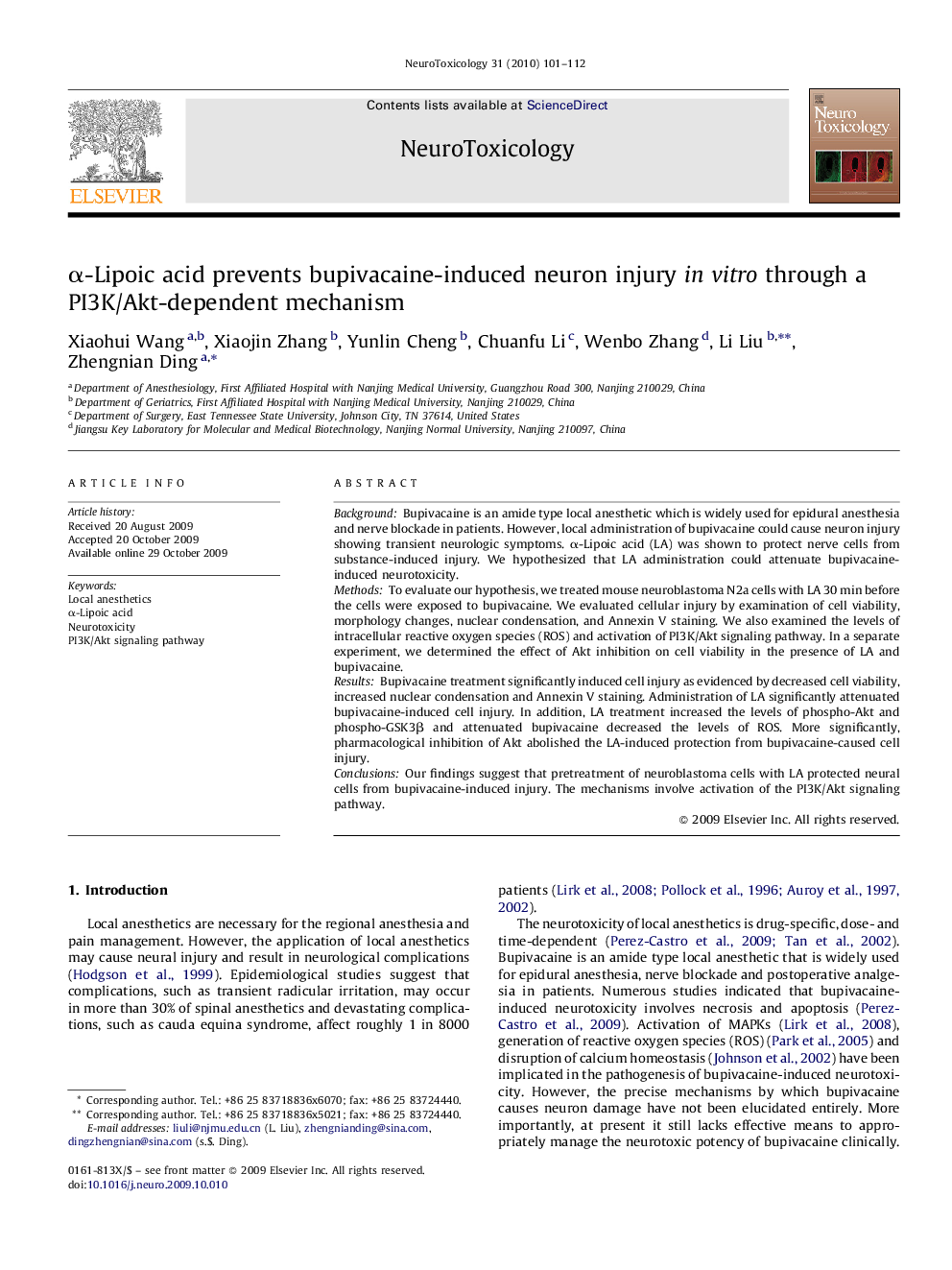| Article ID | Journal | Published Year | Pages | File Type |
|---|---|---|---|---|
| 2590669 | NeuroToxicology | 2010 | 12 Pages |
BackgroundBupivacaine is an amide type local anesthetic which is widely used for epidural anesthesia and nerve blockade in patients. However, local administration of bupivacaine could cause neuron injury showing transient neurologic symptoms. α-Lipoic acid (LA) was shown to protect nerve cells from substance-induced injury. We hypothesized that LA administration could attenuate bupivacaine-induced neurotoxicity.MethodsTo evaluate our hypothesis, we treated mouse neuroblastoma N2a cells with LA 30 min before the cells were exposed to bupivacaine. We evaluated cellular injury by examination of cell viability, morphology changes, nuclear condensation, and Annexin V staining. We also examined the levels of intracellular reactive oxygen species (ROS) and activation of PI3K/Akt signaling pathway. In a separate experiment, we determined the effect of Akt inhibition on cell viability in the presence of LA and bupivacaine.ResultsBupivacaine treatment significantly induced cell injury as evidenced by decreased cell viability, increased nuclear condensation and Annexin V staining. Administration of LA significantly attenuated bupivacaine-induced cell injury. In addition, LA treatment increased the levels of phospho-Akt and phospho-GSK3β and attenuated bupivacaine decreased the levels of ROS. More significantly, pharmacological inhibition of Akt abolished the LA-induced protection from bupivacaine-caused cell injury.ConclusionsOur findings suggest that pretreatment of neuroblastoma cells with LA protected neural cells from bupivacaine-induced injury. The mechanisms involve activation of the PI3K/Akt signaling pathway.
